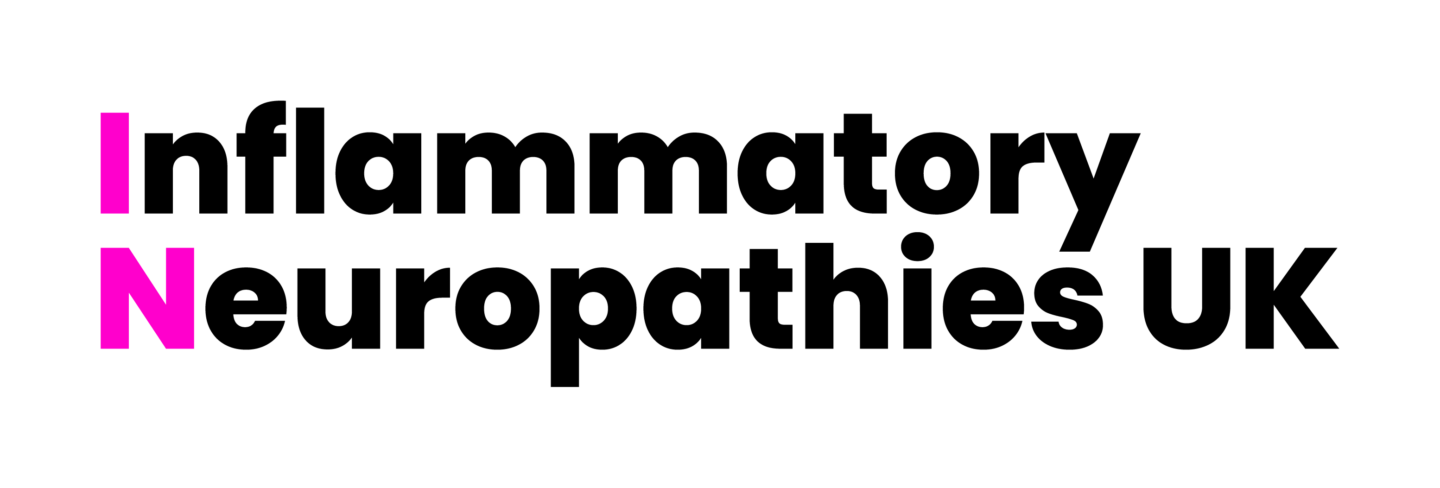Our Patron, Professor Richard Hughes shares his thoughts on the history, current position, and future of GBS
Yesterday: forms of GBS
In 1916, Guillain, Barré and Strohl distinguished Guillain-Barré syndrome (GBS) from other diseases causing rapid weakness. They emphasized loss of tendon reflexes and abnormalities of the cerebrospinal fluid (the fluid which surrounds the brain, spinal cord and nerve roots) with a high protein content and normal cell count. Postmortem examinations in the 1950s and 1960s showed that the usual cause was inflammation of the peripheral nerves. This inflammation damaged the myelin sheaths insulating the axons (the “wires” taking messages from the central nervous system to and from the muscles and skin). This is the basis of the common motor and sensory form of GBS, now called acute inflammatory demyelinating polyradiculoneuropathy (AIDP). In the 1980s, Tom Feasby in Canada reported patients almost indistinguishable from AIDP during life but shown postmortem to have axon damage, a condition now called acute motor and sensory axonal neuropathy (AMSAN). In the early 1990s, an American team led by Guy McKhann studied patients in North China including some who died and from whom postmortem examinations were available. They distinguished a third form, affecting the motor and not the sensory nerves, which they called acute motor axonal neuropathy (AMAN). The three forms all vary in their severity. In mild disease, the weakness is caused either by a temporary block of nerve conduction at the breaks, called nodes, in the myelin sheath or by reversible loss of the myelin sheath without permanent damage to the axon. In severe disease, the axons are interrupted and only regrow slowly or not at all.
Different forms of GBS
- acute inflammatory demyelinating
- polyradiculoneuropathy (AIDP)
- acute motor and sensory axonal neuropathy (AMSAN)
- acute motor axonal neuropathy (AMAN)
- Miller Fisher syndrome
- Miller Fisher GBS overlap syndrome
There are other less common forms of GBS. The most striking consists of loss of eye movements, clumsiness and loss of tendon reflexes, called the Miller Fisher syndrome after the Canadian neurologist who described it in the 1950s.
Today: GBS worldwide
This century, Bart Jacobs in Rotterdam has run the massive International Guillain-Barré syndrome (IGOS) study, supported by GAIN. Headline results from the first 1000 patients showed that the motor-sensory form was predominant in Europe and the Americas and Asia but pure motor disease (probably AMAN) in Bangladesh. The outcome of GBS is variable but worse in Bangladesh where intensive care is limited. After one year, 17% were unable to walk without aid in Europe and America and 31% in Bangladesh. The geographical variations could be caused by differences in the triggering infections or the genetic makeup of the population or both. In population-based studies, the average annual incidence of GBS increases with age, from about 0.5 per 100000 in children to about 2 per 100000 in septuagenarians. GBS is nearly twice as common in men than women.
Two thirds of people with GBS have had a recent infection. Almost every known infection has been implicated. Only a small number of infections have been proved by formal studies to be precipitants of GBS (see below). Despite contrary claims, there is no, or only a very small, increase in GBS after Covid.
Some infections proved to trigger GBS
- Campylobacter jejuni (causes diarrhoea)
- Cytomegalovirus (causes chest infections)
- Epstein-Barr virus (causes glandular fever)
- Hepatitis E (a cause of hepatitis)
Today: the causes
Each form of GBS is likely to have a different cause. Thanks to the work of Nobihuro Yuki in Japan and Hugh Willison in Glasgow during the 1990s and 2000s, we now understand that AMAN and Miller Fisher syndrome are caused by antibodies generated by the preceding infection. Campylobacter jejuni has molecules on its surface membrane which resemble molecules, called gangliosides, on the surface of axons and Schwann cells. A very few people infected by Campylobacter jejuni develop antibodies which cross-react with these gangliosides and trigger the immune response which causes the nerve damage. The type of nerve damage depends on the ganglioside. People with AMAN have antibodies to gangliosides GM1 or GD1a and people with Miller Fisher Syndrome have antibodies to ganglioside GQ1b. The antibodies work by engaging a missile-like molecule called complement to poke holes into the axon.
We still do not know the cause of AIDP. It might, like AMAN, be due to antibodies to different gangliosides or combinations of gangliosides. However, under the microscope the diseased nerves look like experimental autoimmune neuritis produced by injecting rats with nerve myelin. In the 1970s and 1980s this model was shown to be caused not by antibodies but by T-cells reacting with two myelin proteins, P2 and P0. No one could find immunity to these proteins in human GBS and this mechanism fell from favour. This year however, Sukenikova and colleagues in Switzerland, using state-of-the-art techniques, identified single T-cells reacting with P2 or P0 in the blood and nerves of AIDP patients but not, or rarely, in AMAN or healthy people.
There are probably other forms of GBS still to be identified. Very recently, Simon Rinaldi in Oxford identified a small group of patients with antibodies against neurofascins, molecules at the nodes which fasten the myelin producing cell to the axon. These patients had very severe disease which did not respond to standard treatment but did respond to a drug against antibody producing cells.
Today: treatment
The fact that spontaneous improvement from GBS is the rule is paradoxically a mixed blessing because it makes it more difficult to discover effective treatments. Corticosteroids were used for many years with claims and counterclaims about their efficacy. Only when they were tested in large randomised controlled trials during the 1970s and 1980s did it become accepted that their apparent efficacy is illusory. In the 1980s, a large North American trial showed that plasma exchange (replacement of the plasma with a substitute thus removing antibodies) hastened recovery. This conclusion was confirmed by large French trials. In the 1990s, first a Dutch and then international trials showed that intravenous immunoglobulin (infusion of huge amounts of antibodies from blood donors) was at least as good as plasma exchange. Excitingly, pharmaceutical company Annexon have just reported benefit from a complement inhibiting drug, ANX005 given early in the disease.
Tomorrow: promising channels for research
- Identify more discrete forms of GBS. Invest in further efforts to find new antibodies which define these discrete forms. They might react with structures on the axons, nodes, myelin or myelin producing cells.
- Confirm the presence of T-cell responses to myelin proteins in AIDP. This would open the possibility of treatment with a new range of drugs.
- Study the pathology (the microscopic appearances of nerves) in different forms of GBS to explain their mechanisms.
- Undertake population-based studies of all patients in communities, including British communities, to discover the burden and natural history of the different forms of GBS.
- Support the international GBS outcome study. This will
- help identify more discrete forms of GBS
- discover more about the infections and genes which cause each form
- provide comparative data with which to compare the results of new treatments.
- Undertake trials to discover whether the newly described complement inhibitor is as good as or better than existing treatments and whether it can usefully be added to existing treatments.
- If the evidence for T cell involvement is confirmed, undertake trials of the many available anti-T cell agents.
- Investigate the best methods for treating pain and fatigue including the best ways of providing psychological, physiotherapy and social support.
GAIN can help by supporting the international GBS outcome study and providing research funds to help our UK laboratory and clinical GBS experts pursue this research.
An extended version of this article with references is freely available at https://doi.org/10.1111/ene.16346




